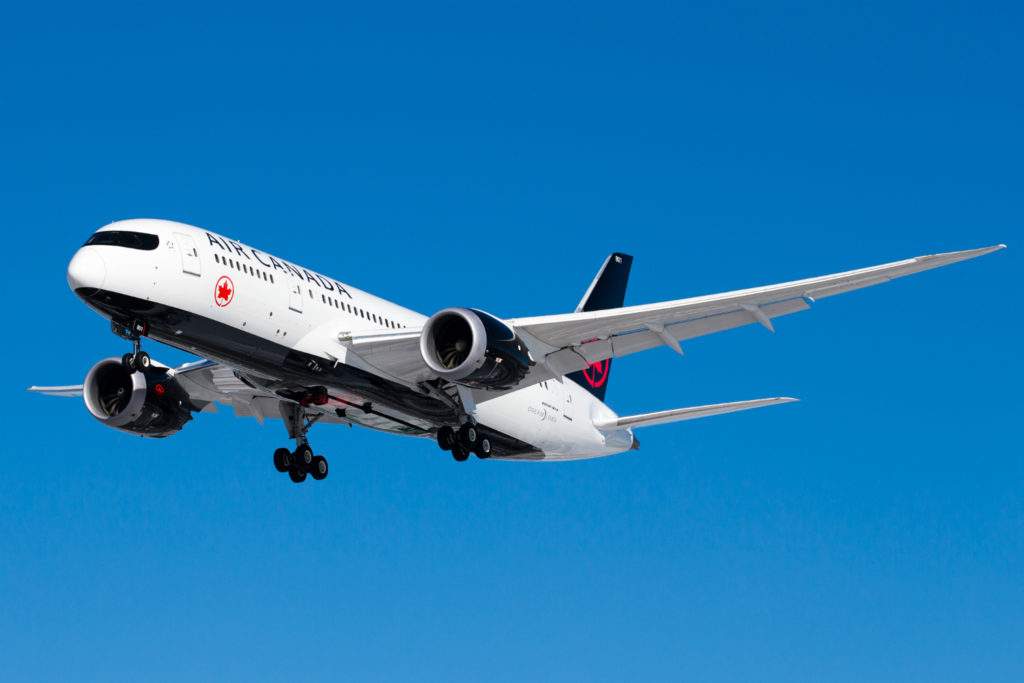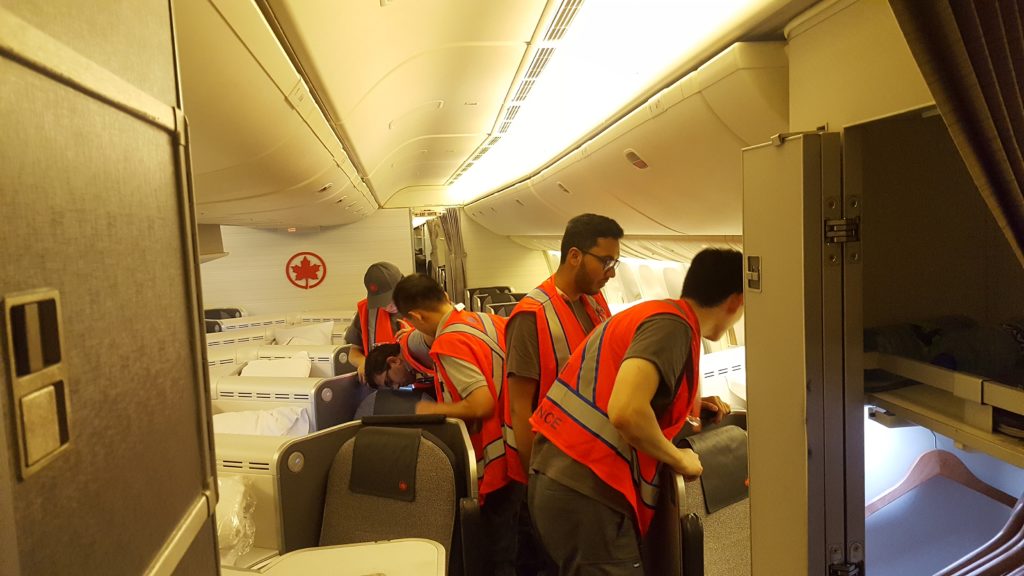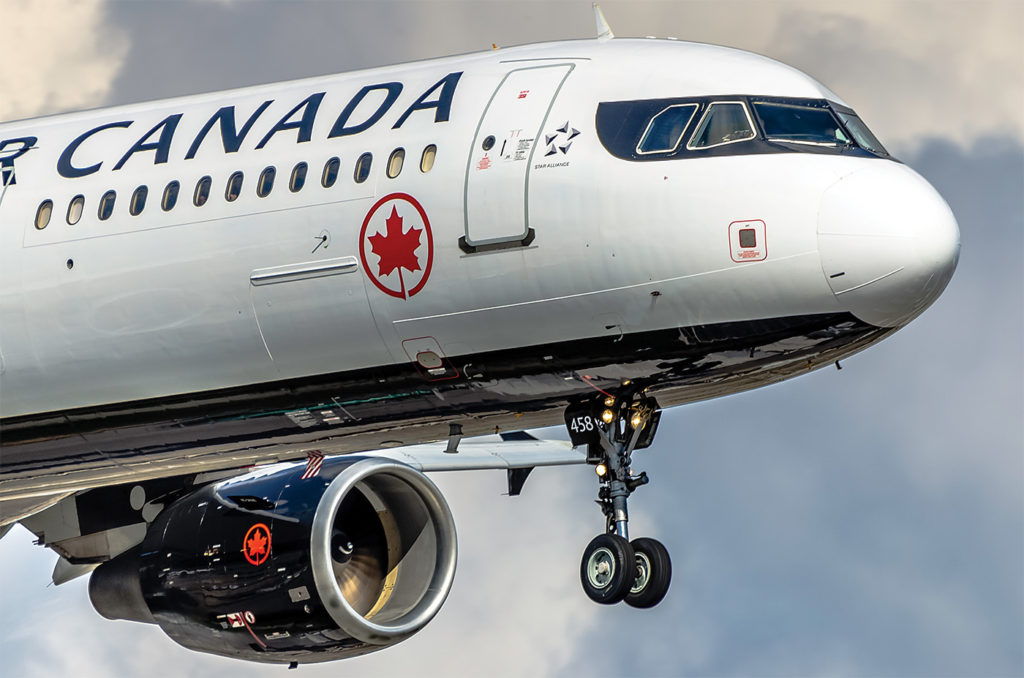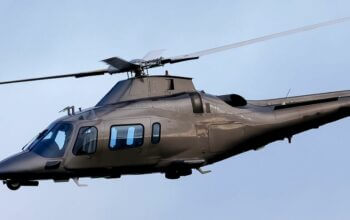Estimated reading time 6 minutes, 56 seconds.
Next-generation aircraft like the Boeing 787 Dreamliner and the Bombardier C Series, as well as the introduction of the Boeing 737 MAX, are at the heart of a massive transformation of Air Canada’s fleet.

But as those new aircraft begin to come online, the airline is seeing a gap between the skills young aviation maintenance engineers (AMEs) are learning in college, and the knowledge they’ll need in the real world.
“Changes in technology have become exponential,” said Boyd Parsons, general manager, Excellence 5.0, for Air Canada.
“So the gap between the curriculum of what they teach in college and what is actually being worked on in the industry continues to grow wider and wider.”
That, coupled with the expected retirement of a great number of AMEs over the next few years, and a looming shortage of replacements, has prompted Air Canada to create a new work integrated learning (WIL) maintenance program to help bridge the gap.
“Through technology, systems have become so integrated, where you can’t really say, ‘This is where aircraft maintenance starts and stops, and avionics starts and stops,’ ” said Parsons.
“It’s become one and the same … the technology is certainly a much better product, but the curriculum in the colleges has not changed to reflect those changes.”

Air Canada is part of a consortium led by the Canadian Council for Aviation and Aerospace (CCAA) in a federally-funded WIL initiative that will see students alternate between in-class sessions and real-world placements.
Air Canada and other employers who hire students for WIL are eligible for wage subsidies, and the students will be exposed to some of the industry’s most advanced technology–including all of the aircraft types in Air Canada’s mainline fleet.
“These are all aircraft types that they would not get exposure to in the two-year [college] program that exists today,” said Parsons.
In addition to the Dreamliner and 737 MAX, students will work on all of Air Canada’s Airbus products, including the A319, A320, A321 and A330; as well as the Embraer E190 and Boeing 777.
“Some people are attracted to specific sectors such as helicopters or general aviation,” he added. “But certainly there’s a significant percentage that aspire to work on the commercial aircraft types, such as the Boeing 787.”
The industry consortium consists of nine companies and will partner with colleges across the country. Air Canada will be working with Fanshawe College in London, Ont.; Canadore College in North Bay, Ont.; Centennial College in Downsview Park, Ont.; École nationale d’aérotechnique in Saint-Hubert, Que.; and British Columbia Institute of Technology in Burnaby, B.C.
Although the consortium’s long-term plan is to develop a four-year program at each of those schools, Air Canada has already begun tapping into their existing two-year AME programs.

This past September, a group of 49 AME students who had completed their first year of college began work placements at Air Canada facilities in Toronto, Montreal and Calgary. Those placements are expected to last 15 months, and students will return to school in 2018, said Parsons.
The planned four-year program would conceptually be four semesters of study interspersed with four work terms, with each work term lasting about six months.
Air Canada hopes the program will attract the best and the brightest students, including women and members of Aboriginal communities.
“Diversity is something that we’re very focused upon,” said Parsons. “We hope the WIL program will encourage young people to pursue a career they would not have considered before.”
The knowledge gap is in part a product of approved Transport Canada curriculum that leans toward general aviation rather than the latest technology in commercial aviation, said Parsons.
“If we go back 20 years ago, there was not a lot of difference in terms of the theory of systems [from] general aviation to commercial,” he said.
“In the last 20 years it’s changed significantly, yet the curriculum has not changed its fundamentals.”
It is difficult for colleges to keep pace, he added, noting a Boeing 787 Dreamliner sells for $200 million.
“The solution that we see is working with the educators and integrating this new technology,” he said. “The industry becomes an extension of the learning experience, which is what drove us to the WIL model.”
Parsons could not say how many students the Air Canada WIL program will be able to accommodate at a given time, and could not reveal how many students Air Canada hopes the program will generate over the next 10 years.
CCAA estimates Canada will need 5,300 new aircraft mechanics and aircraft inspectors between 2016 and 2025, and plans to fund 1,000 WIL placements throughout the industry over the next four years.
Given the shortage, Parsons acknowledged it’s never been more important to inspire young people to pursue this kind of work.
“It’s an opportunity for our very experienced, talented workforce to pass on knowledge,” he said.
“For the youth that are in the program, it’s an opportunity … to work with a major airline, to give them the opportunity to demonstrate their knowledge, their skills, their abilities and their behaviours, and be able to show what they can offer for possible future employment.
“It’s a partnership between the union and the company,” he said. “So it’s a win-win-win-win program.”








